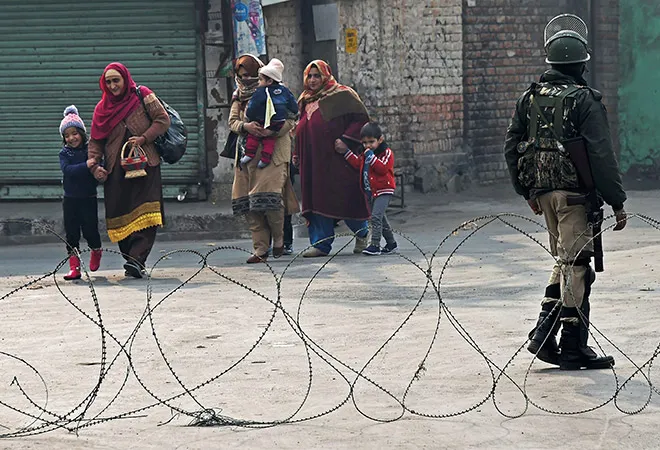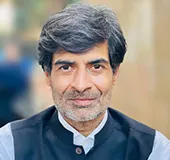On Tuesday, the former chief of the Intelligence Bureau, Dineshwar Sharma, was appointed as the Government of India’s representative for Kashmir, in a bid to, in the words of Union Home Minister Rajnath Singh, “open a sustained dialogue” with stakeholders holding various shades of opinion in the beleaguered state of Jammu and Kashmir.
Dialogue, however, is rarely easy in Kashmir. History, religion, external actors, changing demographics and a technology-driven news environment have turned Kashmir into a perpetually simmering tinderbox of violence and cacophonous opinions.
In his book, Clash of Barbarisms: September 11 and the Making of the New World Disorder, SOAS political scientist Gilbert Achcar famously wrote that the US and the Arab world were caught between two ‘barbarianisms’: Islamic fundamentalism and the military muscle of a superpower.
Kashmir, unfortunately, finds itself similarly trapped: a tragic painting of what ails many other parts of the world. A reality where the brutal response to ‘jihad’ and the ‘jihad’ itself affect similar populations.
The first ‘barbarianism’ results from poor state capacity in responding to incidents of terror, violence and unrest in J&K. Each time violence erupts in Kashmir, it generates an exasperatingly similar set of reactions. Absent of any political guidance, and clever and contemporary security responses, the state police and army resort to brutal methods of crowd control, generating further outrage and disaffection.
Even as angry prime-time anchors fall over themselves to carry the banner of nationalism to garner TRPs, the Valley feels victimised twice over.
The second ‘barbarianism’ is the rabid violence of the extremists, who draw their self-perceived virility from social media where their perverse actions are extolled and eulogised. In turn, tech-savvy, disgruntled and often indoctrinated young men from Kashmir fall prey to the illusion of ‘Azadi’ (freedom) and the romanticism of a transnational jihad. Trapped in the futile narrative of a ‘colonising’ India and an occupied ‘Kashmir’, the aspirations of the state’s citizens remain unfulfilled and democracy mostly defeated.
The vale beyond the veil
Caught between these two extremes, successive central governments in New Delhi have consistently failed to create a political opening to quell this recursive violence. If the Narendra Modi government is intent on making a sincere attempt to free Kashmir from this pattern, it must take stock of past failures and the lessons that they offer.
For one, the rest of the world is largely unsympathetic to separatist and radical movements, especially in areas where Islamic ideologies have taken hold in the post-9/11 scenario. It is less likely than ever that the ‘Kashmir conflict’ will be ‘internationalised’, or other parties will seek to mediate.
This, however, may not be a bad thing as it has created enormous space for dialogue, which, in the case of Kashmir, is repeatedly wasted away by unimaginative state policy. Poor governance, failure to empower and create local institutions, and the lack of sustainable economic integration has left the Kashmiris disillusioned and secluded.
Second, despite the predictability of protests and uprisings, the Indian state’s inability to engage with the Valley manifests itself repeatedly through its failure to build police capacity that responds humanely. A larger failure in recent times has been the lack of capability to control the narrative. More often than not, sophisticated separatist propaganda successfully hijacks public perception and imagination.
Add to this, the vicious social media debates between the political parties at the Centre to use the travails of Kashmiris as a useful prop to score brownie points for, or against, the ruling dispensation. Internet shutdowns and curbs on media freedom only fuel the feeling of isolation at one level, and reveal the helplessness of the state machinery at another.
Internet shutdowns and curbs on media freedom only fuel the feeling of isolation at one level, and reveal the helplessness of the state machinery at another.
Finally, New Delhi has continued to invest political capital in a select few elite families, in the hope that they may manage the conflict. This is an unfortunate ‘colonial’ tactic. Outreach involves reaching out to disaffected communities and addressing local concerns, and in discovering new voices and new leadership that have a stake in the future. Presumably, this is what Dineshwar Sharma hopes to achieve as special interlocutor.
But he has his work cut out. The predominant discord that has manifested in the past year with a spate of violence has seen the coming together of ideas and actors that are sometimes indigenous and organic, sometimes controlled and contrived, and many a times angry and irrational.
The spontaneous discord that emerged this past summer, though, may have been different and new. The response to it must also be novel. It must discard antiquity, manage malevolence and empower new and young democratic voices.
Talk peace, not piece
The Indian state’s failure so far reflects lazy politics. A successful counterterrorism strategy requires outreach, minus the fear and threat of violence that the state today invokes. At the same time, conversations are meaningless if the state cannot create sufficient peace for dialogue to take place.
The key is to find a balance. Perhaps a consensus in Kashmir will require, to paraphrase Margaret Thatcher, “an abandonment of all beliefs, values and policies. So that it is something in which no one believes and to which no one objects.”
This commentary originally appeared in The Economic Times.
The views expressed above belong to the author(s). ORF research and analyses now available on Telegram! Click here to access our curated content — blogs, longforms and interviews.




 PREV
PREV


